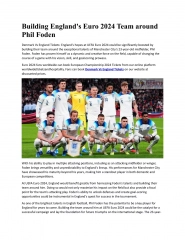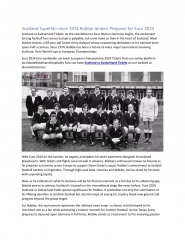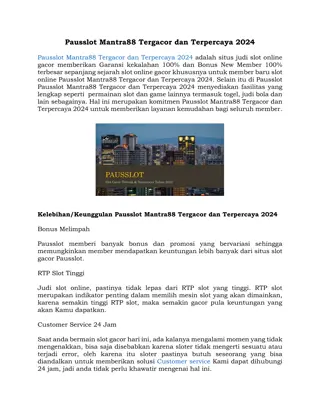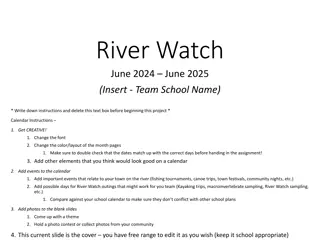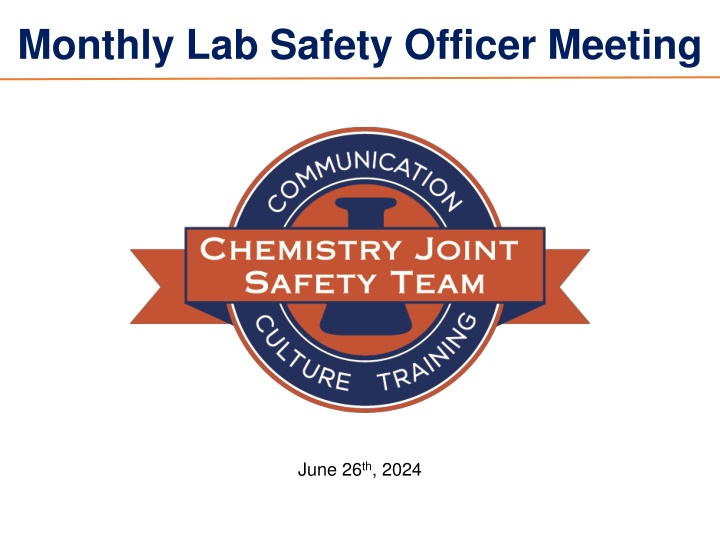
Lab Safety Officer Meeting - June 2024 Agenda and Discussions
Stay informed about the latest safety updates discussed at the Monthly Lab Safety Officer Meeting held in June 2024. Topics include announcements, open discussions on facility issues, and safety minutes on cryogen hazards and containers. Learn about the importance of handling cryogenic liquids safely to prevent accidents and ensure a secure laboratory environment.
Download Presentation

Please find below an Image/Link to download the presentation.
The content on the website is provided AS IS for your information and personal use only. It may not be sold, licensed, or shared on other websites without obtaining consent from the author. If you encounter any issues during the download, it is possible that the publisher has removed the file from their server.
You are allowed to download the files provided on this website for personal or commercial use, subject to the condition that they are used lawfully. All files are the property of their respective owners.
The content on the website is provided AS IS for your information and personal use only. It may not be sold, licensed, or shared on other websites without obtaining consent from the author.
E N D
Presentation Transcript
Monthly Lab Safety Officer Meeting June 26th, 2024
Agenda 1. Announcements a) Change of LSO Form https://forms.gle/BsQQuzsK5F7c3kqq6 b) Reporting Incidents to DRS Phone: 217-333-2755 Email: drs@illinois.edu Submit an Event Report: https://forms.illinois.edu/sec/1674176205?referrer=https://shibboleth.illinois.edu/ c) Anonymous Near Misses and Incidents Form for the JST https://forms.gle/88wVJ8gHXFoMqBtw5 d) Thanks to all who sent nominations for the ACS Graduate Student and Postdoctoral Scholars Recognition Program -- Leadership in the Promotion of Research Safety Award! 2. Open Discussion Facilities Issues/Updates a) 3. Recent Near Miss/Incident Reports None submitted this month a) 4. Safety Minute Cryogen safety a) 2
Open Discussion Any facilities issues or updates? Safety concerns or comments? Suggestions for future meeting topics? 3
Safety Minute: Cryogens (Hazard Overview) A cryogen or cryogenic liquid is defined by the National Institute for Standards and Technology as any liquid with a boiling point below 93K (-180 C or -240 F) at 1 atmosphere of pressure. Extreme Cold: Contact with cryogenic liquids, their vapors, or uninsulated cryogen containing vessels can lead immediately to severe burns and frostbite to skin and eyes. Asphyxiation: Evaporation of cryogens can displace surrounding air, reducing environmental oxygen levels to an extent where rapid suffocation can occur without warning. Pressure: Evaporation also leads to a rapid increase of pressure and possible vessel rupture if cryogens are stored in a container that is not adequately vented. Oxygen Enrichment: Oxygen can condense and liquefy on outer surfaces of non-insulated lines or cryogen containing vessels left open to air. Liquid oxygen supports combustion and can result in explosions.
Safety Minute: Cryogens (Containers) Pressurized Cylinders Non-Pressurized Dewars Longer storage time Have pressure gauge and safety devices such as pressure relief valves and rupture discs in case of excessive gas buildup Occasional hissing sounds from a cylinder indicate normal operation of the pressure relief valve as the liquid slowly evaporates NEVER tamper with pressure relief valves or other safety features (have cylinders checked by professional in case of concern) Shorter storage time Have loose fitting cap to keep air from entering vessel while allowing evolved gas to escape NEVER use non-cryogen approved containers such as beverage thermos to store or transport cryogens NEVER completely seal off any cryogen (including dry ice) containing vessel 5
Safety Minute: Cryogens (Handling) Storage: Store all vessels containing cryogens in well ventilated areas, away from combustible material. Do not leave containers uncovered for long periods of times. *Note that a cold room does NOT slow down the evaporation rate. Cold rooms are not well ventilated and can quickly become an asphyxiation hazard when cryogens are stored in them. If cryogenic liquids must be used or stored in a poorly ventilated area, or if large amounts could potentially be released and cause oxygen deficiency, an oxygen monitor should be installed. Transportation: Never tip, slide, or roll cryogen containers on their side. Keep containers vertical at all times. Avoid mechanical or thermal shock. Use appropriate carts when moving heavy containers with no wheels, and always secure the container during transport. Always push containers on wheels. Pulling can cause injury if they tip and fall on you. Disposal: Allow excess cryogens to evaporate naturally in a well-ventilated place. NEVER pour cryogenic liquids down the drain, as the pipes are not made to withstand the low temperature.
Cryogen Related Emergency Procedures Accidental condensation of oxygen or argon: Open the system to the atmosphere. Shut off the source of vacuum if it is present. Place a blast shield in front of the apparatus and allow the system to slowly warm to room temperature. It is important that this is an open system to minimize the risk of an explosion upon warming. The sudden boiling of the cryogenic liquid is a significant hazard. Liquid oxygen mixed with organics increases the explosion hazard significantly. Alert researchers in the area and inform DRS. Skin or eye exposure to cryogens: Use warm water (up to 108 F/42 C, NOT above 112 F/44 C) to restore normal body temperature. Do NOT rub the frozen skin. Seek medical attention. Remove or loosen clothing that may restrict blood flow to the frozen area. **Always wear appropriate PPE including eye/face protection, lab coat, and cryogenic gloves when handling cryogens to minimize risk of exposure** Cryogen spill or container rupture: Evacuate the area while alerting others. Oxygen deficiency might make the area unsafe to enter. Call 911. 7
Maintenance of cryogen gloves Cryogen gloves are not intended to be submerged in/purposely exposed to cryogenic liquids! They only serve as a protective barrier against accidental cryogen exposure. Sensible Storage: Store your gloves away from exposure to moisture or direct sunlight, as these can degrade the materials over time. Hanging gloves on a rack or storing them in a designated and labelled container can also help prevent damage. Avoid water exposure: Water exposure leads to glove damage. Waterproof gloves are commercially available, but water exposure still should be avoided. Remove jewelry: Jewelry and watches can cause tears in the gloves. They should also be removed to ensure that metal pieces do not freeze to the skin upon potential contact with cryogens. Replacement: Even with proper care, gloves for liquid nitrogen handling will eventually wear out and lose their safety properties. If you notice significant damage or signs of deterioration that cannot be repaired, it s time to invest in a new pair. 8 Quotes taken from: https://www.hazchemsafety.com/gloves-for-liquid-nitrogen-handling-guide/
Incident from LBNL: Cryogen Burn from Liquid N2 What happened? A new researcher was being trained to fill a 4L Dewar flask with liquid N2 The researcher was wearing a face shield, safety glasses, lab coat, long pants, close-toed shoes, and cryogen handling gloves Later when the researcher removed the cryogen handling gloves, they discovered signs of extreme cold/skin exposure The researcher s group called paramedics and the researcher was taken to the hospital The researcher was found to have sustained tissue damage What went right? The new researcher had been trained in proper handling of the cryogen by an experienced researcher The researcher was wearing the correct types of PPE Emergency medical assistance was sought immediately upon noticing the exposure 9 Details copied/adapted from official report: https://amo-csd.lbl.gov/safety%20downloads/Lessons%20Learned%20Cryogen%20Burn.pdf
Incident from LBNL: Cryogen Burn from Liquid N2 What caused the exposure? An investigation revealed several possible contributing factors: Leak in the filling hose Potential contact with frozen metal filling components Cryogen gloves possessed several small holes in the splash-resistant outer layer What can be learned from this incident? Visually inspect PPE and other equipment before starting work Don t use PPE/equipment that is damaged Report damage (no matter how minor) so that replacements can be made Cryogen gloves should not be used after Long term contact with cryogens Contact with water Cryogen exposures may not be apparent for hours after the injury Be aware of possible exposures during/after working with cryogens 10 Details copied/adapted from official report: https://amo-csd.lbl.gov/safety%20downloads/Lessons%20Learned%20Cryogen%20Burn.pdf
Thank you for coming! Please forward LSO meeting recap email/slides to your group! We can stay for a few minutes if there are further questions. We are taking attendance based on the participant list! No need to sign in. 11









